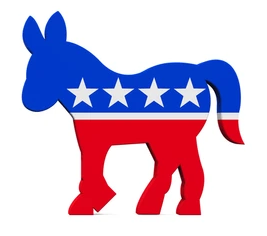Suggested Use of Candidate Pages & Project Disclaimer
Note: There are a few ways to use this page. It mixes objective source material with light analysis and first-hand reporting so voters can choose their depth.
How to get the most out of this candidate page
- Start with the Quick Summary. Click the Quick Summary button underneath the websites section. It gives you the fast take: what we know from sources + brief analysis from a “data collector / local reporter” point of view.
- Scan the objective sources. If you want more data, jump into the source material we’ve collected:
- Official campaign website (if available)
- Social media pages and posts (if available)
- Interviews (video/audio) and transcripts (if available)
- Check the agenda & positions. Look for the candidate’s stated agenda and issue stances. We try to group them plainly so you can compare across candidates quickly.
- Read the Transparency/Accessibility rating. For a deeper look at how transparent the candidate has been (web presence, interviews, follow-ups, meet n greets) and how communicative they've been in response to outreach, see the rating and its short explanation. This helps you understand what’s easy to find and who is easy to contact.
- Use the page as a multi-layered hub. If you 'just want the facts', stick to the source documents. If you want opinions about transparency, accessibility, and communication, check the transparency meter. If you want coverage somewhere in between, like interviews that range from introductory to moderately pressing, watch the interviews. Choose your own adventure.
Where we add context or opinion, it’s to help busy voters make sense of gaps in local information. Not everyone has time to be a volunteer politico.
John P. Capizola
Events
As of September 11, 2025, InformTheVoteNJ searched the official Cumberland County Democrats website, the joint Capizola/Garcia-Balicki Facebook page, and other public listings (Mobilize, local news, etc.). No publicly advertised campaign events for either candidate were found.
This screenshot shows the “Events” page on the Cumberland County Democrats website at the time of review, which displayed no upcoming events:
Agenda
Info Collected From PRIOR Elections
Agenda
- Educational excellence by supporting schools and providing lifelong learning opportunities
- Environmental sustainability by protecting our natural resources for future generations
- Fiscal responsibility by ensuring efficient use of taxpayer dollars
-
View Screenshot
If on desktop, right click the image and select 'open in new tab' for a larger image
- Improve roads/infrastructure/broadband, support senior housing and healthcare, and provide recreational advancements facebook campaign site
policy positions
- Supports armed security in schools. (learned from the Candidates Forum held at Bridgeton High School)
Capizola and Austino also brought up an issue regarding South Ave in Bridgeton while on the campaign trail: Source, however it seems as though the issue is in the process of being handled: Source, County Press Release.
Background and Campaign Message
He majored in health and physical education. He has a master's degree in Educational Leadership. He has certifications to be a New Jersey principal and Supervisor. He also has business experience in regards to owning a restaurant and a laundromat.
Experience
2023 Candidates Forum Statements
When asked about improving transparency and accountability, Capizola spoke about needing to communicate better with the community, the new county website which should be done soon, and needing reporters in the county.
At one point during the forum, Capizola made it clear that he is against school vouchers.

